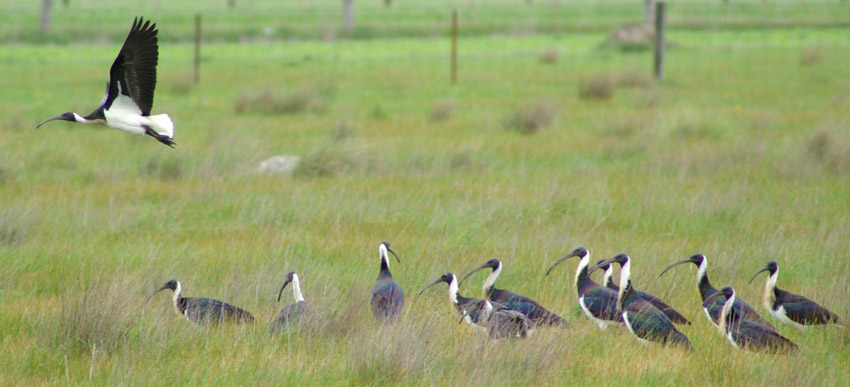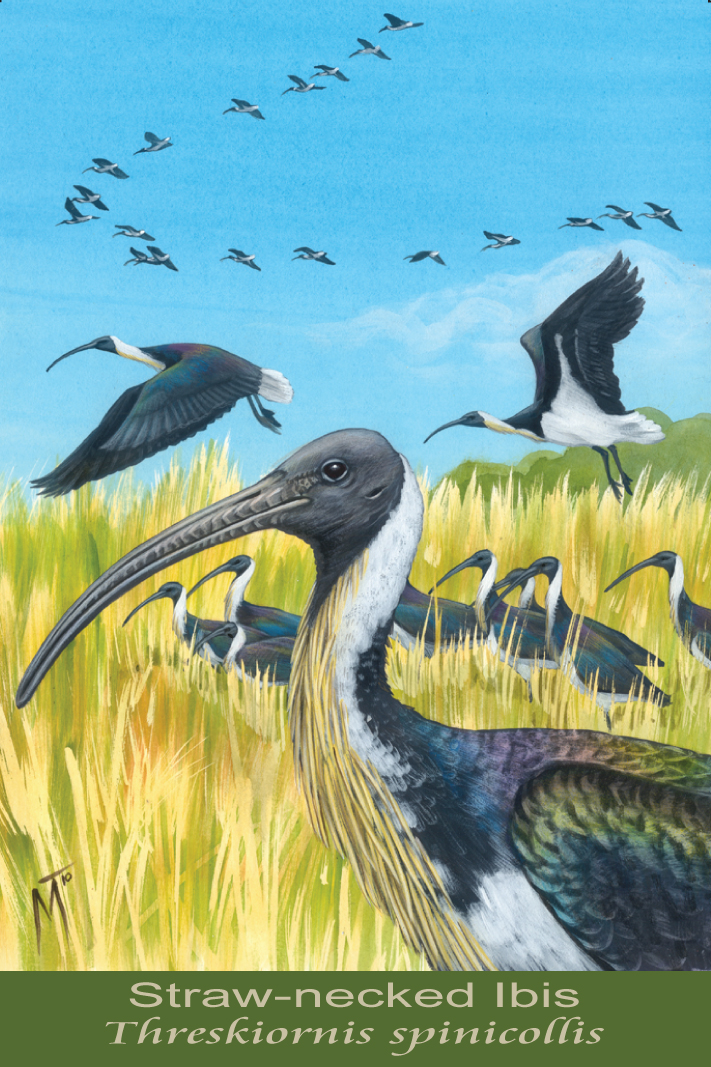Straw-necked Ibis
Threskiornis spinicollis


Flocks of Ibis can be seen circling at high altitude in thermal currents or travelling great distances in aerodynamic v-shaped flying patterns. They travel from large breeding colonies of many 1000’s of birds, where they make stick nests in trees over water or on the ground on islands.
They feed in shallow wetlands, grasslands and rural paddocks where they use their long curved beaks to collect and eat insects and other small creatures, and are extremely beneficial in reducing locust grasshopper plagues. The Straw-necked Ibis gets its name from its coarse yellow breast plume feathers. Its dark, iridescent wing feathers, make it more colourful than the mainly white Sacred Ibis.
Size: 58-76 cm
Photo and Illustration: Mark Trinham